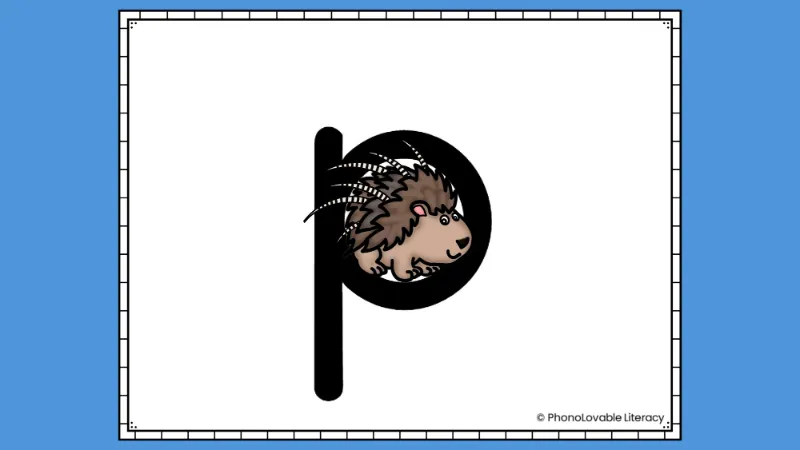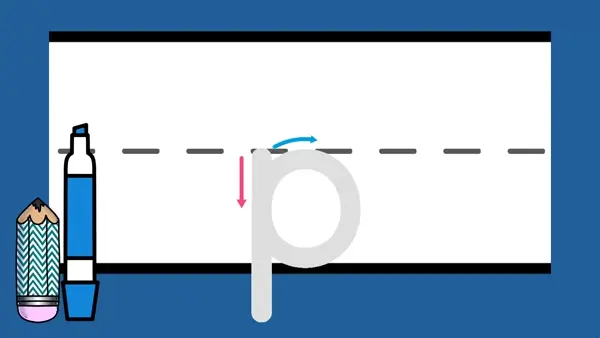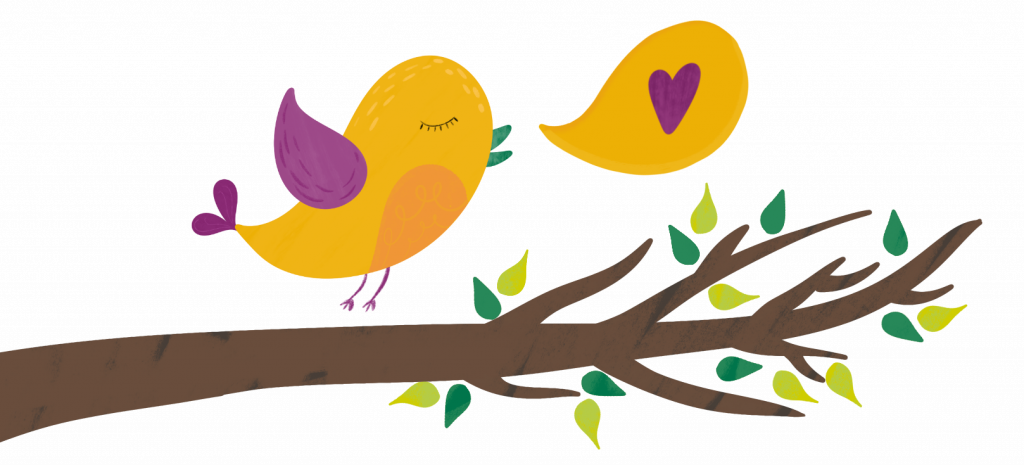Are you getting ready to teach the letter P sound?
Do you want to make sure your practice is aligned with the “Science of Reading” (SoR)?
What’s the best sequence for the introduction of letter sounds? Some teachers like to go in a-z order. Others prefer to prioritize the most common letters like s and a, saving the least common letters like j and v for last. This option makes the most sense to me, so that students can begin reading and writing common, meaningful words as soon as possible. But you may have a different sequence that you like and good reasons for choosing it.
While I don’t have a strong opinion about letter-sound sequence, I sure do have a passionate preference for HOW to introduce a new letter and its related sound.
Whereas I used to say something like this to teach the letter sound p:
“Let’s meet the letter p (holding up a card with the printed letter p). P says /p/, as in pan (showing a picture of a pan). Repeat after me, P, pan, /p/”.
For the past few years I’ve been implementing a slightly different routine, and the results have been pretty amazing.
So here’s what I do and why I do it. I’m sharing in hopes that you’ll get something new and easy to try with your own students!
Routine for Introducing the Letter P and Its Sound
You can watch this video to get an idea of the entire routine. You can even play it for your students!
Start with speech.
Why?
Our brains are naturally wired for speaking, not reading. Starting with speech, as opposed to print, gives our students an instant win that feels good. All they have to do is look at photos of interesting things like porcupines, penguins, and pandas and repeat each word after their teacher says it. There’s no pressure, and it’s comfortable and familiar. There’s nothing abstract like letter names or printed letters yet.

How?
Say 3-6 words that begin with the letter p, such as penguins, pandas, pigs, peaches, pumpkin pie, and porcupine. Ask children to repeat each word after you say it. Show pictures if you can. This adds interest and can be especially helpful for students with limited English vocabulary and kids who struggle to pay attention to just auditory information. Tell students that all of these words begin with the sound /p/. As much as possible, try not to say “puh”; instead, try to clip the sound. This helps when students start to blend words.
Draw attention to what your mouth does when you make the /p/ sound.
Why?
Drawing our children’s attention to how our mouths look and feel while producing the letter p sound makes an abstract concept (such as a letter) more concrete. It simply adds another layer of connection to serve as a bridge between the phoneme and the grapheme. Students can both see and feel the sound being produced.

How?
Ask students to notice what their mouth is doing to make the sound /p/. If you are in small group, hold up a mirror to let students see for themselves. Draw attention to the fact that our lips need to press together and then pop out a puff of air. I show students how I put my hand in front of my mouth to feel the puff of air and ask them to do it as well.
Display a sound articulation card (mouth pic) for students to see the closed lips of a student making the /p/ sound. When modeling the sound, really emphasize the popping/puffing out air part to make sure that students are making the /p/ sound and not the /b/ sound (which looks the same but doesn’t feel the same! – the /b/ sound is voiced and “buzzy” in the throat while the /p/ is an unvoiced sound).
Introduce the printed letter with an EMBEDDED mnemonic.
Why?
Research has confirmed that using embedded images, keyword pictures displayed within the letter as opposed to apart from the letter (above, below, beside), resulted in student improvement in both the acquisition AND retention of letter-sound correspondences. Using pictures, especially ones of relatable objects, to help kids connect letter-sound relationships makes so much sense. But it was great to read several research studies that prove it!

How?
Now is the time to show your students the printed letter. But not just a plain letter, an embedded letter. The image of a keyword such as porcupine embedded IN the letter p helps solidify the association between letter and sound. I add a little saying for each mnemonic for extra connection. For p, we say “Petey, the porcupine, plunges in the pool.” Here’s a little animated video to watch as you chant the alliterative phrase with your students.
Model and practice how to write the letter.
Why?
Reading and writing are interconnected. We teach letter sounds so that students may not only read new words, but learn to write them as well. As an interventionist who works with students from kindergarten to 4th grade, I’ve seen how hard it is to undo inefficient letter formation habits. For the past few years, I’ve made it a point to prioritize letter formation as early as possible.

How?
I try to make my letter formation phrasing catchy and singsongy to aid in memory. You may have different wording from a program you’ve used, or you may wish to change up how you say this, but here’s what I say as I model how to write the lowercase letter p.
“Start at the middle. Straight line down. Keep on going all the way down (below the bottom line). Hop back up and curve around.” I model with my hand in the air and/or show an animated slide on my computer (in small group) or smart TV (in whole group). Ask students to follow along with their fingers in the air. If children are seated at desks, ask them to finger-write it on the desk.
I usually have students practice without a writing utensil a few times before I ask them to write with a dry-erase marker or pencil. This is just so I can make sure they’ve got the movements down before they put it on paper.
Research-Aligned Alphabet Resources
Do you need engaging resources that are aligned to the research-based steps above?
Here are my recommendations for introducing the alphabet to your preschool or kindergarten children:
Initial Sound Slides: These no-prep slides introduce each letter sound in the most effective and efficient way. With each click, you will show images of interesting photographs containing the beginning sound, a photo of a real kid making the sound along with a keyword image, the letter with an embedded mnemonic image, and lastly, an animated letter formation slide (one for uppercase and one for lowercase letters).
Mnemonic Alphabet Articulation Mouth Cards | Alphabet Posters with Real Pictures: If you prefer a paper option or don’t have access to digital resources, you may like these printable, 1-page posters of mouth pics along with the embedded mnemonic letters. It’s also a nice way to display the alphabet if you have classroom wall space.

Alphabet Picture Cards with Embedded Mnemonics: This set of printable pages comes with embedded letter cards in two sizes. Teach phonemes for 21 consonants, 5 short vowels, AND consonant digraphs WH, TH, SH, CH, and CK.
Get a free set of small embedded letter cards when you join us in our newsletter community!
Looking for an “everything bundle” of embedded letter resources, including digital slides, letter cards, worksheets, games, and more? Save nearly 50% and get all 12 resources. Get your students quickly and effectively mastering letter sounds so they can begin the even more exciting discovery of how to read and write words!
Sources:
Ehri, L. C., Deffner, N. D., & Wilce, L. S. (1984). Pictorial mnemonics for phonics. Journal of Educational Psychology, 76(5), 880–893. https://doi.org/10.1037/0022-0663.76.5.880
Ehri, L. C. (2013). Orthographic Mapping in the Acquisition of Sight Word Reading, Spelling Memory, and Vocabulary Learning. Scientific Studies of Reading, 18(1), 5–21. https://doi.org/10.1080/10888438.2013.819356
Ehri, L.C. (2022). What Teachers Need to Know and Do to Teach Letter–Sounds, Phonemic Awareness, Word Reading, and Phonics. The Reading Teacher, 76(1), 53-61. https://doi.org/10.1002/trtr.2095
McNamara, G. (2012). The effectiveness of embedded picture mnemonic alphabet cards on letter recognition and letter sound knowledge. Theses and Dissertations. 302. https://rdw.rowan.edu/etd/302
Shmidman, A., & Ehri, L. (2010). Embedded Picture Mnemonics to Learn Letters. Scientific Studies of Reading, 14(2), 159–182. https://doi.org/10.1080/10888430903117492

